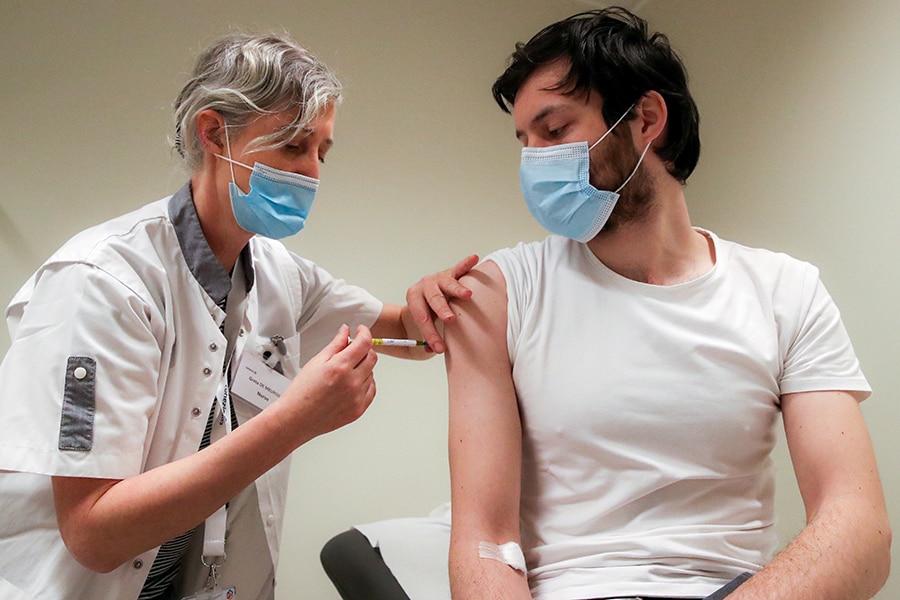
This new Covid-19 vaccine could bring hope to the unvaccinated world
A small German company called CureVac is on the cusp of announcing the results of its late-stage clinical trial, and unlike the Moderna and Pfizer-BioNTech vaccine, the RNA vaccine made by CureVac doesn't need a deep freezer
 A volunteer receives a dose of CureVac vaccine or a placebo during a study by the German biotech firm CureVac as part of a testing for a new vaccine against the coronavirus disease (COVID-19), in Brussels, Belgium March 2021; Image: Reuters/Yves Herman
A volunteer receives a dose of CureVac vaccine or a placebo during a study by the German biotech firm CureVac as part of a testing for a new vaccine against the coronavirus disease (COVID-19), in Brussels, Belgium March 2021; Image: Reuters/Yves Herman
In early 2020, dozens of scientific teams scrambled to make a vaccine for COVID-19. Some chose tried-and-true techniques, such as making vaccines from killed viruses. But a handful of companies bet on a riskier method, one that had never produced a licensed vaccine: deploying a genetic molecule called RNA.
The bet paid off. The first two vaccines to emerge successfully out of clinical trials, made by Pfizer-BioNTech and by Moderna, were both made of RNA. They both turned out to have efficacy rates about as good as a vaccine could get.
In the months that followed, those two RNA vaccines have provided protection to tens of millions of people in some 90 countries. But many parts of the world, including those with climbing death tolls, have had little access to them, in part because they require being kept in a deep freeze.
Now a third RNA vaccine may help meet that global need. A small German company called CureVac is on the cusp of announcing the results of its late-stage clinical trial. As early as next week, the world may learn whether its vaccine is safe and effective.
CureVac’s product belongs to what many scientists refer to as the second wave of COVID-19 vaccines that could collectively ease the world’s demand. Novavax, a company based in Maryland whose vaccine uses coronavirus proteins, is expected to apply for U.S. authorization in the next few weeks. In India, pharmaceutical company Biological E is testing another protein-based vaccine that was developed by researchers in Texas. In Brazil, Mexico, Thailand and Vietnam, researchers are starting trials for a COVID-19 shot that can be mass-produced in chicken eggs.
©2019 New York Times News Service







